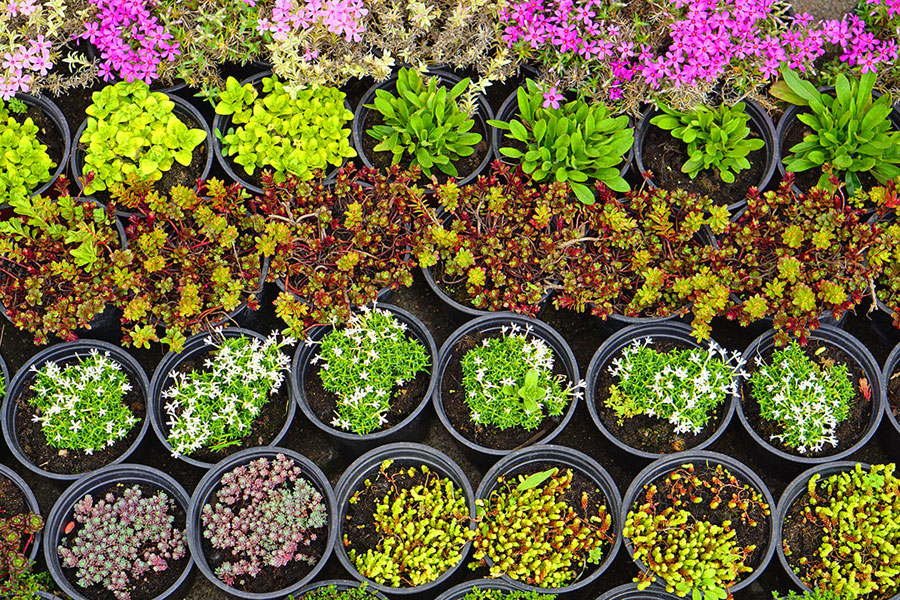As the days grow shorter and the air takes on a crisp chill, it’s time to start thinking about preparing your nursery for the colder months ahead. Fall nursery management is all about ensuring that your plants and seedlings not only survive the winter but thrive come spring. By taking the right steps now, you can set your nursery up for a successful growing season next year.
So, how do you protect your plants, harden off seedlings, and make sure your nursery is winter-ready?
Timing Is Key for a Healthy Transition
Fall is the time to begin preparing your nursery, but starting too late can spell disaster. It’s important to start early, giving your plants and seedlings time to adapt to the cooler temperatures and reduced sunlight.
Begin by cutting back on fertilizing. You don’t want to encourage new growth late in the season when plants should be preparing for dormancy. A reduction in nitrogen-rich fertilizers helps plants focus on hardening off rather than putting energy into tender new growth that won’t survive the winter.
For seedlings, it’s crucial to give them time to harden off before the first frost. Gradually exposing them to cooler temperatures and shorter days ensures that they can adjust to the coming cold.
Gradually Reduce Watering
During the growing season, your plants likely thrived on consistent watering. However, as autumn progresses, you’ll want to reduce watering gradually. This helps signal to your plants that it’s time to prepare for dormancy.
Too much water in the fall can lead to soft, new growth that’s vulnerable to frost damage. Instead, let the soil dry out slightly between waterings, especially for perennials and woody plants. This controlled stress will help toughen up your plants, making them more resistant to winter weather.
For seedlings, ensure they’re receiving adequate moisture but avoid waterlogging the soil, as soggy roots are more prone to freezing and rot.
Remove Weak or Dead Growth
One of the best ways to prepare your nursery for winter is by giving your plants a thorough cleanup. Remove any dead, diseased, or weak growth that might invite pests or harbor fungal diseases during the colder months.
Pruning back perennials and shrubs not only tidies up your nursery but also allows the plants to conserve energy through the winter. However, be careful not to prune too heavily late in the season—this can stimulate new growth that’s particularly vulnerable to frost.
Seedlings, on the other hand, don’t typically need pruning, but it’s important to clear away any dead leaves or debris that could provide a breeding ground for pests over the winter months.
Mulching: Insulate and Protect
One of the best ways to safeguard your plants against winter’s chill is by applying a layer of mulch. Mulch acts as an insulator, helping to regulate soil temperature and retain moisture during the colder months. This is particularly important for young plants and seedlings that haven’t yet developed deep root systems.
Spread a generous layer of mulch—such as straw, shredded bark, or leaves—around the base of your plants, making sure not to bury the stems or crowns. This will help keep the soil warmer and reduce the likelihood of frost heaving, which can push young plants out of the ground.
For seedlings, a light layer of mulch can help protect them from sudden drops in temperature, allowing them to ease into dormancy without stress.
Shield Plants from Harsh Winds
In addition to freezing temperatures, harsh winter winds can cause serious damage to your plants. Young plants and seedlings are particularly susceptible to wind damage, as they haven’t yet developed the strength to withstand powerful gusts.
Consider creating windbreaks around your nursery, especially in open areas. You can use materials like burlap, wooden fencing, or even temporary barriers made of plastic or fabric to shield your plants from the worst of the winter winds.
If you have taller plants or trees, staking them can also provide additional support and prevent breakage during strong winds.
Protect from Frost
For young seedlings, the sudden onset of frost can be fatal. While older, established plants have deeper roots and thicker stems to protect them, seedlings are more vulnerable. Use frost cloths or row covers to drape over your seedlings during nights when frost is expected.
These covers help trap warmth and keep frost from settling on the delicate plants. Be sure to remove the covers during the day so the seedlings can get adequate sunlight and air circulation.
Another trick is to place cold frames or plastic tunnels over your nursery beds, creating a mini greenhouse effect. This is especially useful in protecting seedlings from both frost and sudden temperature fluctuations.
Winter Doesn’t Mean Pest-Free
It might be tempting to think that winter eliminates pest problems, but many pests will overwinter in plant debris, soil, and even mulch. In fact, some pests are more active in the colder months as they seek out shelter and food sources in your nursery.
Regularly check your nursery for signs of pests, and take preventive measures by removing plant debris, dead leaves, and other areas where insects might hide. Set traps or use organic pest repellents to keep critters away from your vulnerable plants and seedlings during the colder months.
Conclusion
Preparing your nursery for winter doesn’t have to be a daunting task. By gradually adjusting watering schedules, mulching for protection, pruning back weak growth, and covering seedlings from frost, you can ensure your plants stay healthy and resilient during the colder months.
With a few strategic steps, you’ll set the stage for a flourishing garden come spring. These fall nursery management tips will not only protect your plants and seedlings through the winter but also give them the strength and vitality to thrive when the warmer days return.



